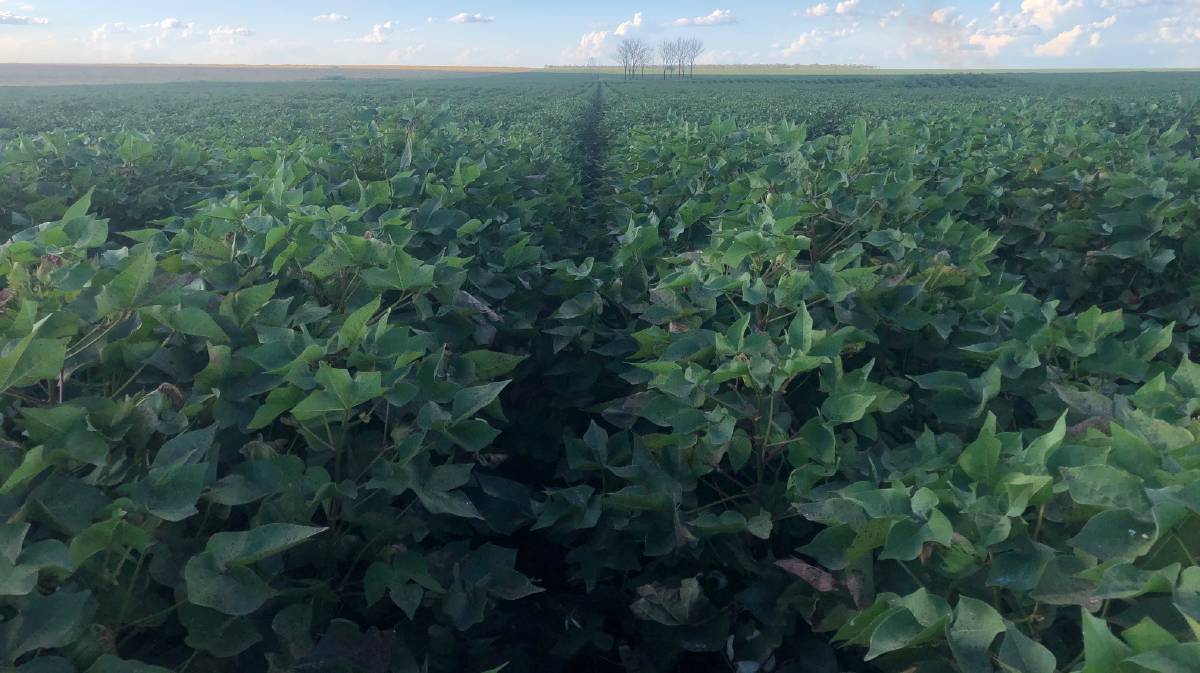
Northern Australian cotton drives forward
Cotton is set to become a major crop across northern Australia, with landholders gearing up to invest in fibre production, and deliver significant nutritional benefits to the long-established cattle industry.
Speaking at the hugely successful Northern Australia Food Futures conference in Darwin last week, Tipperary Group general manager David Connolly said the construction of a cotton processing gin was already well underway.
“We didn’t need a chicken and egg situation to get this industry going,” Mr Connolly said.
“We know we can successfully grow cotton here, and grow it well.
Tipperary Group farm manager Bruce Connolly showing the impressive growth of the Tipperary crop.
“However, a major barrier was cost of freight to have northern grown cotton processed.
“Fortunately Allan Myers (the owner of Tipperary Group) also recognises the potential of this industry and backed the development of the industry.
“We’ll have the gin up and running in 2022, giving the industry what it needs to go ahead.”
That gin will be located on Tarwoo Station just north of Katherine on the Stuart Highway.
Stage one of the project will see the gin potentially processing some 14,000 bales of cotton a month – or 70,000 bales over five months – in 2022.
The facility, already under construction, will be run by grower-owned RivCott Ginning from Carrathool, NSW.
The gin will be developed in eight stages, based on the development of northern Australia’s cropping systems.
Mr Connolly said the NT facility was designed so it could become Australia’s largest and most efficient gin.
The Katherine gin is said to be viable at about 20,000 bales.
A second grower-owned gin is also planned for Kununurra in Western Australia.
Under the corporate structure outlined at the Food Futures conference WANT Cotton (derived from Western Australia/Northern Territory) business will wholly own the NT gin and the future WA gin.
However, the gin is designed to be 100 per cent grower-owned and controlled through grower shareholder agreements.
Mr Connolly said growers who commit to a supply agreement will have the right to buy shares equivalent to their anticipated annual production.
“There is no plan for non-growers to own shares or have any control,” Mr Connolly said.
The push into cotton follows successful trials on Tipperary during the past three years, overseen by Mr Connolly’s brother Bruce, who spent more than 20 years with the Cubbie Group at Dirranbandi.
Cotton farmers Ron Greentree, Moree, Sam McBean, Ruby Plains, and Ord Irrigation Cooperative chairman Fritz Bolton with moderator Simone Cameron discussing the future of cotton in northern Australia.
Mr Connolly is now Tipperary Group’s farm manager and the president of the Northern Cotton Growers Association.
Interestingly, the industry is set to be developed primarily as a dryland system, with relatively limited irrigated areas, utilising the mosiac of suitable soils across the north.
Mr Connolly said cotton was particularly appealing as it was a food and fibre crop in one.
“For every tonne of lint produced there is over a tonne of seed,” Mr Connolly said. “And we all know cottonseed is an excellent cattle feed that is high in energy and protein.”
One challenge is that whole seed cannot be brought into WA. Seed processed at Katherine would need to be rolled and cracked before it could be used in that state’s cattle industry.